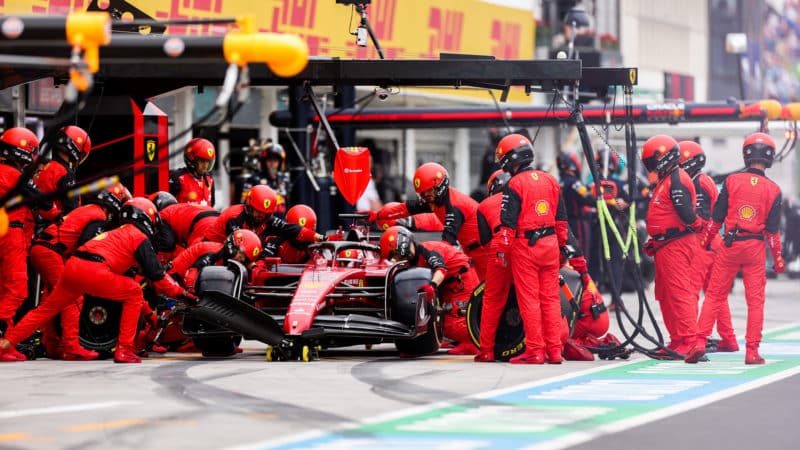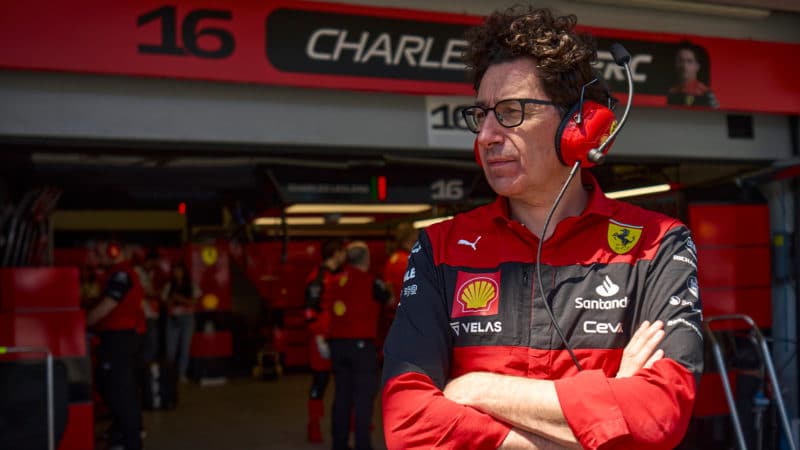But Spain and Azerbaijan go down as races that were clearly lost due to reliability (admittedly, Verstappen might still have won in Baku anyway, but big points went begging), and then Canada had the knock-on impact of Leclerc’s grid penalty for a new power unit, leaving him out of the fight on a track where Ferrari had the edge.
It was left to Carlos Sainz to take up the fight in Montreal and fall just short, but then he too would suffer a spectacular failure when set for second — ahead of Verstappen — in Austria.
Then we get to the strategic errors, with Monaco and Silverstone ones that Leclerc could point to, even if Sainz fared better on both occasions. Oh, and now add Hungary to the list.
With Leclerc so desperate to make up for his mistake that saw him crash out of the lead in France, Budapest was his race to win as he led at the halfway stage and had both George Russell and his own team-mate Sainz between himself and the recovering Verstappen. On a track that is hard to overtake on, it was still a very strong position despite the Red Bull pace.
Alpine had shown that the hard tyre was not switching in the way that was expected
It’s true that Ferrari was not particularly quick on Sunday after showing the expected dominant Friday pace – as Mark Hughes points out – but all of the signs were there to tell it what not to do.
Ferrari hadn’t tried the hard tyre on Friday but other teams had and were clearly avoiding it. Even Pirelli was openly saying pre-race that the hard was going to be a tyre that most teams would hope to not use, because it was both slow and going to be near-impossible to warm-up in cool conditions.
That Ferrari thought a higher-grip track on race day would help get performance from the hard overlooks the fact it had been wet for most of the morning on Sunday, to such an extent the Formula 3 race was run almost exclusively on wet tyres. With only F2 running after that, the track was green, and no better than it would have been on Friday in FP2.
But the glaring warning light for Ferrari came from Alpine. Completely committed to the one-stop – with only one set of mediums available for the race – Fernando Alonso and Esteban Ocon both took on hard tyres on lap 21 and 23 respectively. They provided the example for all other teams that the tyre was not switching on in the way expected.

Ferrari fits the hard tyres in Hungary, even though Alpine pace should have sounded the alarm
Peter J Fox/Getty Images
“When we fitted the hard our simulation was that it would be a difficult couple of laps of warm-up, they would have been slower than the mediums for 10 or 11 laps but then they would have come back by the end of the stint – and it was a 30-lap stint,” Mattia Binotto said after the race.
“So we fitted the hard tires at the time because it was a 30-lap stint and we were trying to protect position to Max and it would have been too long certainly on the soft. Our choice and our analysis was, yes, it would be difficult at the start of the stint but it would come back by the end.”
Except, Leclerc was brought in some 17 laps after Alonso had taken on the hard tyre, and at that stage of the race the Spaniard’s pace had not improved from what he had been capable of at the start of the stint despite the fuel load going down, and nor had Ocon’s ahead of him.
The strategists are paid to look at such scenarios and work out the quickest way to the end of the race. Alpine was showing Ferrari that the hard tyre was not it, but the warning wasn’t heeded. Despite that, Binotto attempted to direct the blame away from his team.



